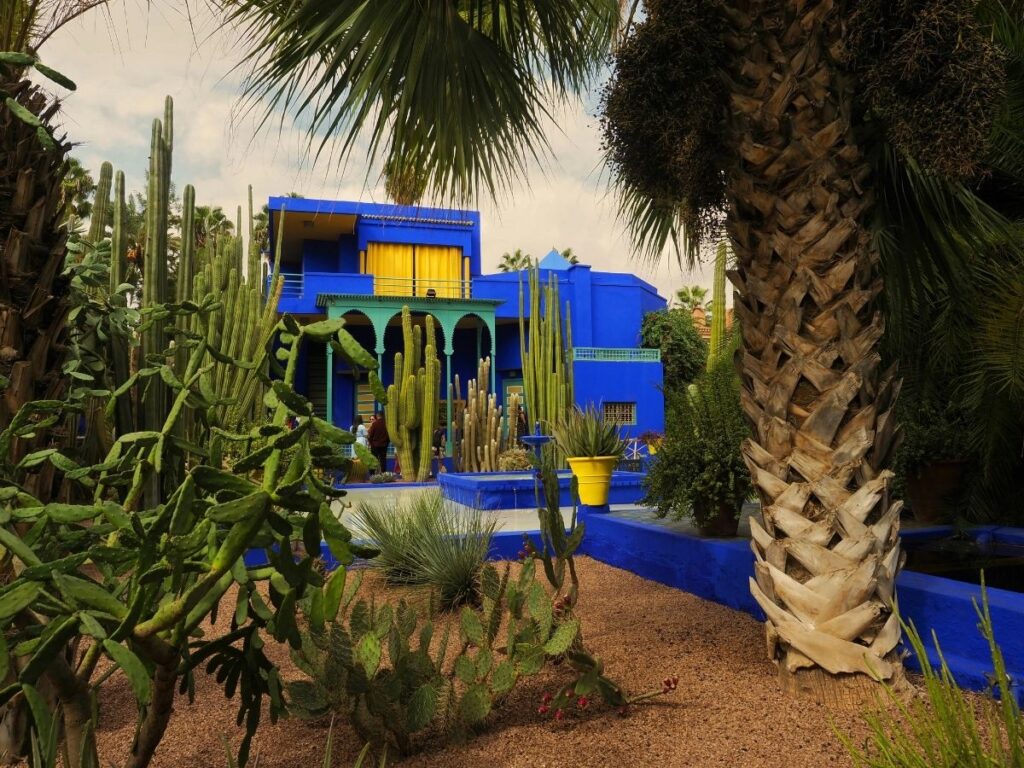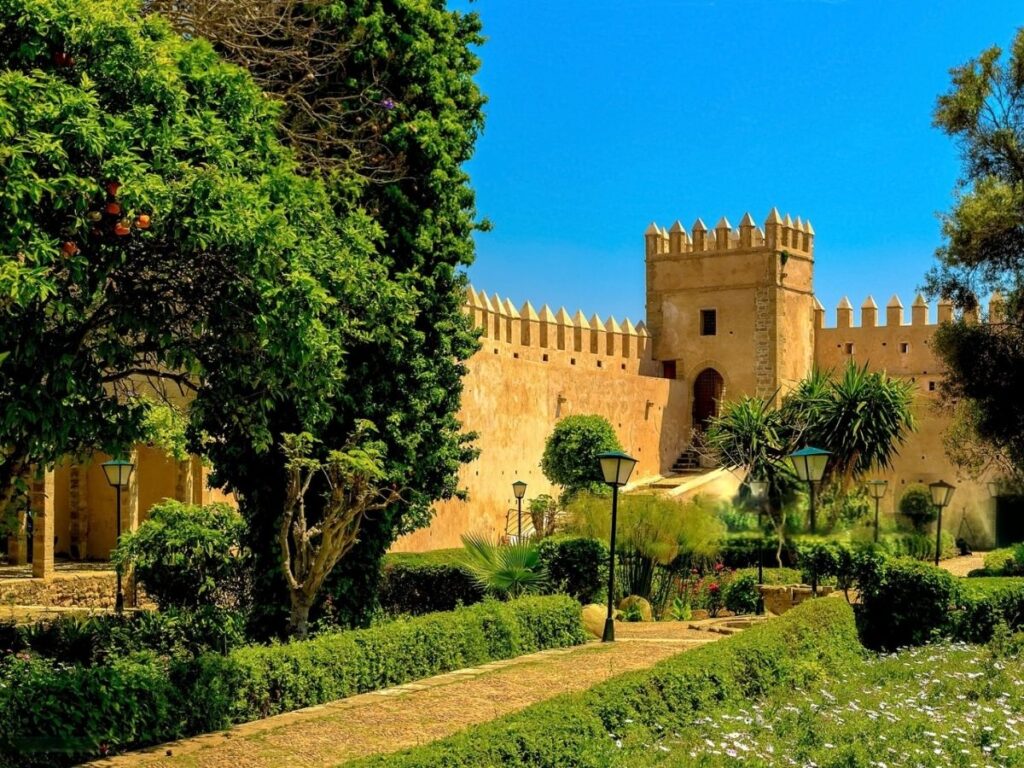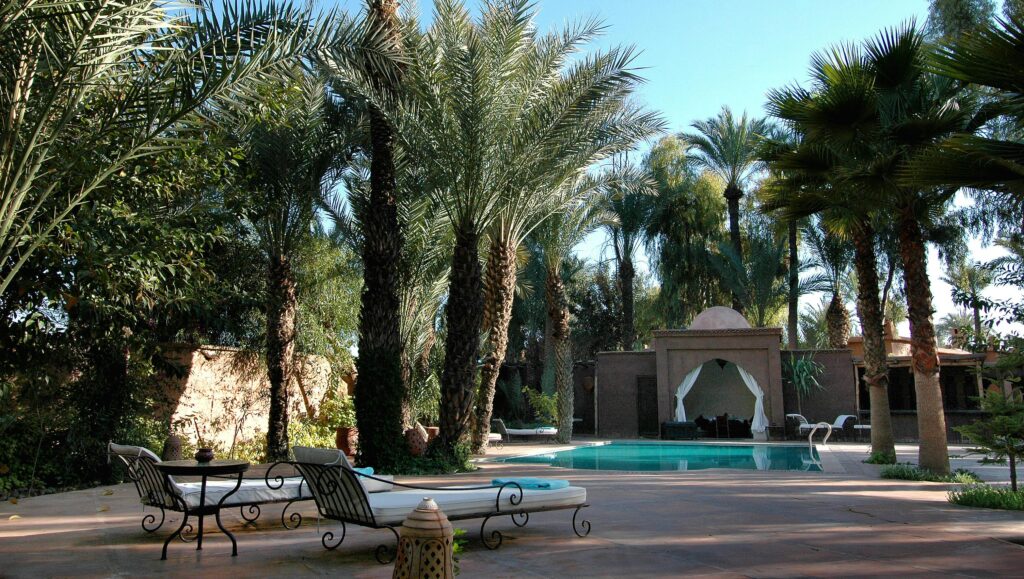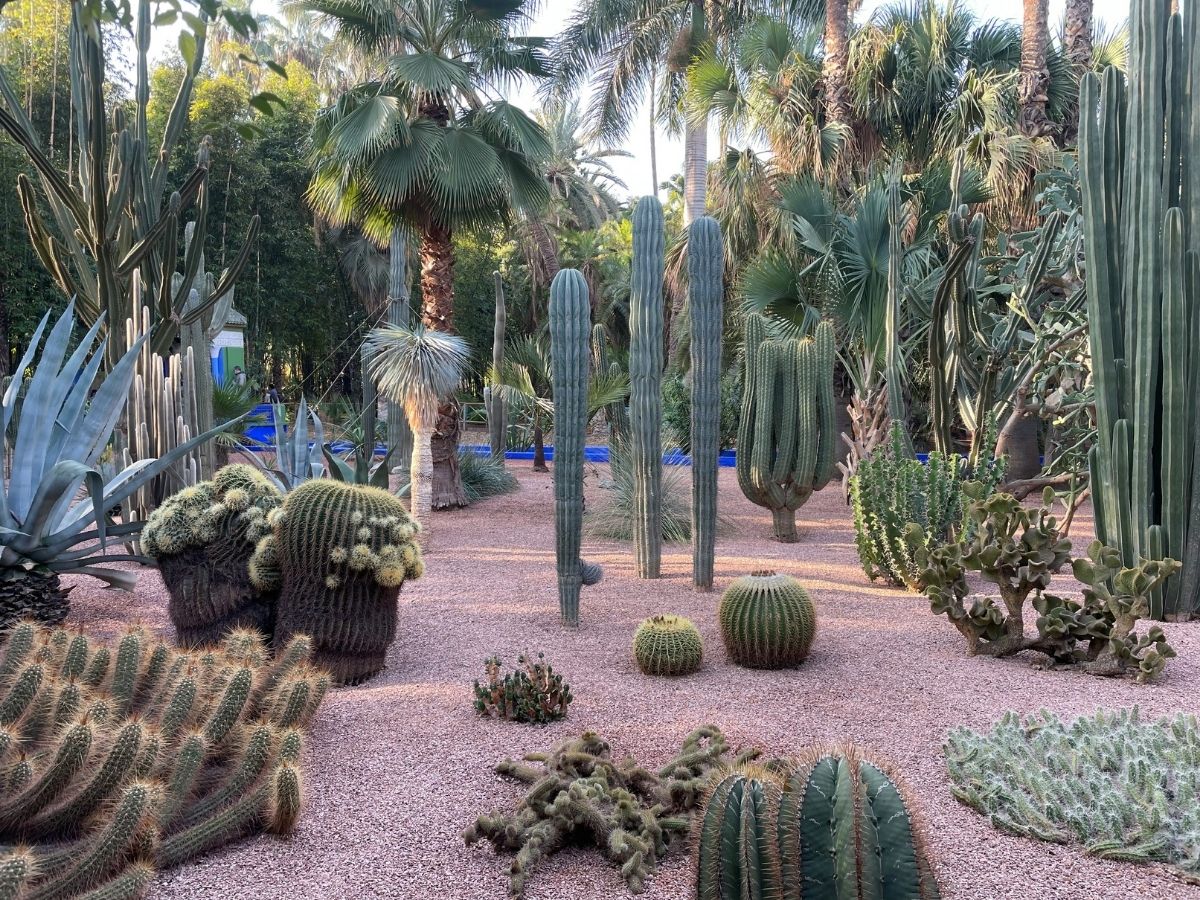Morocco’s medinas—those bustling, labyrinthine centers of commerce and culture—are home to some of the most vibrant and exciting places in the country. However, hidden behind the hustle and bustle of the streets, nestled behind unassuming doors and high walls, lies a world of tranquility and beauty: the secret gardens of the medina. These lush, serene oases are more than just pretty spaces; they reflect Morocco’s long-standing tradition of blending nature with architecture, providing a quiet escape from the noise of daily life.
In cities like Marrakesh, Fez, and Rabat, the medina is often seen as a maze of narrow streets, vibrant souks, and historical sites. Yet, within this frenetic environment are gardens that invite reflection, peace, and a connection to nature, steeped in the values of Islamic garden design. Whether you’re wandering through the courtyards of a traditional riad or exploring a palace garden, these lush retreats are a vital part of Morocco’s heritage.
In this article, we’ll explore some of Morocco’s most beautiful and iconic secret gardens, including Majorelle Garden and Udaya Garden, offering a glimpse into the serene beauty of these often-overlooked spaces.
The Role of Gardens in Moroccan Culture
Moroccan gardens are not just about beauty—they carry deep cultural and spiritual significance. In Morocco, gardens have traditionally been spaces of reflection, restoration, and spiritual connection. This stems from Islamic garden design principles, which seek to create harmony between nature and architecture.
Islamic gardens were originally designed to represent paradise, or Jannah, and they often feature water, shade, and geometric patterns to create a space of peace and balance. In Morocco, these principles are seen in the layouts of both public gardens and private spaces, including the secret gardens of the medina. From tranquil fountains to fragrant flowers and dense greenery, these gardens act as symbolic reflections of heaven on earth.
Majorelle Garden: A Botanical Oasis in Marrakesh
One of the most famous gardens in Morocco is Majorelle Garden, located in Marrakesh. Designed by French artist Jacques Majorelle in the 1920s, this garden is a striking example of Moroccan garden design, blending vibrant colors, tropical plants, and Islamic-inspired geometry.
Majorelle Garden is renowned for its iconic Majorelle Blue—a rich, electric blue that can be seen on walls, benches, and planters throughout the garden. The bold color contrasts beautifully with the lush greenery and the numerous species of plants, including cacti, palms, and bougainvillea. The garden also features several fountains and tranquil pools, creating a serene atmosphere that encourages visitors to slow down and appreciate the beauty around them.
In addition to its aesthetic appeal, Majorelle Garden also houses a museum dedicated to Berber culture, showcasing artifacts that reflect the rich history of Morocco’s indigenous people. The garden, now owned by the Yves Saint Laurent Foundation, remains a popular destination for visitors seeking both natural beauty and cultural insight.

Udaya Garden: Tranquil Beauty in Rabat
Another beautiful example of Moroccan garden design can be found in Rabat, the capital city of Morocco. Udaya Garden, located within the Kasbah of the Udayas, is a peaceful, green oasis that provides a stark contrast to the city’s busy streets. The Kasbah, which dates back to the 12th century, is a fortified area with narrow streets, ancient architecture, and stunning views of the Atlantic Ocean.
Udaya Garden is a classic example of a Moroccan Andalusian garden, featuring lush greenery, vibrant flowers, and citrus trees. The garden’s pathways are lined with benches, inviting visitors to sit and enjoy the peaceful surroundings. The fountain at the center of the garden is a key feature, providing both beauty and sound, adding to the serene atmosphere.
The Udaya Garden also offers panoramic views of the ocean and the nearby Bouregreg River, making it a perfect spot for visitors seeking a quiet escape. The garden’s design emphasizes simplicity and natural beauty, with symmetrical patterns and water features that reflect the Islamic principles of balance and serenity.

The Gardens of Marrakesh’s Riads: Hidden Oases of Tranquility
While Majorelle Garden is well-known, many of the secret gardens in Marrakesh’s riads (traditional Moroccan houses) are hidden gems, offering a much quieter and more intimate experience. These gardens are tucked away behind the high walls of the medina, with doors that open into peaceful courtyards filled with lush greenery, fragrant flowers, and flowing water.
One example is the Bahia Palace, a 19th-century palace in Marrakesh that features some of the most beautiful gardens in the city. The gardens of Bahia Palace are carefully designed with geometric patterns, serene pools, and shaded areas, making it an ideal retreat for rest and contemplation. The ornate design of the pools and fountains adds an extra level of elegance, and the use of cypress trees and orange blossoms adds to the sensory experience.
Many of the riads in the medina feature similarly peaceful gardens, creating small oases where visitors can retreat from the vibrant souks and narrow alleyways. The gardens in these homes are often filled with traditional Moroccan tiles, and they often feature plants like geraniums, jasmine, and pomegranates, which are both decorative and aromatic.

The Jnan Sbil Gardens: A Historical Gem in Fez
Another famous garden that combines beauty and history is Jnan Sbil Gardens in Fez, one of Morocco’s most historical cities. These gardens, located near the Royal Palace, were originally created in the 18th century and are known for their large, shaded areas, palm trees, and water channels. The design of the garden is based on traditional Islamic principles, with a central fountain surrounded by symmetrical pathways and rows of flowers.
Jnan Sbil is often considered a historical gem, not only for its beauty but also for its cultural significance. The gardens have been restored several times throughout the years, ensuring that their classical design and serene atmosphere remain intact. The tranquil setting, combined with the fragrant smells of blooming flowers and the soothing sounds of running water, makes this garden a perfect spot to unwind.

The Spiritual and Cultural Importance of Gardens in Morocco
Beyond their aesthetic beauty, Moroccan gardens—especially those hidden within the medina—hold deep spiritual significance. In Islamic culture, gardens are often seen as symbols of paradise, representing a place of peace, abundance, and reflection. The careful design of Moroccan gardens, with their geometric patterns, flowing water, and vibrant greenery, reflects this spiritual connection to the divine.
These gardens are also cultural touchstones. They represent Morocco’s ability to blend nature, architecture, and art into a harmonious whole. The traditions of garden-making in Morocco are passed down through generations, with each garden reflecting the time and place in which it was created. Whether in the grand public gardens or the private courtyards of a riad, Moroccan gardens are a testament to the country’s enduring cultural values and respect for beauty and tranquility.
The secret gardens of Morocco’s medinas are not just hidden oases—they are living reflections of the country’s history, culture, and spiritual heritage. From the iconic Majorelle Garden in Marrakesh to the serene Udaya Garden in Rabat, these green spaces offer a peaceful escape from the bustling streets and serve as a reminder of Morocco’s deep connection to nature and the divine.
These gardens are treasures of Moroccan architecture and design, often hidden behind closed doors but always offering visitors an opportunity to experience the beauty and harmony that Moroccan culture cherishes. Whether you’re in Marrakesh, Fez, or Rabat, be sure to seek out these tranquil oases—they offer a glimpse into the soul of Morocco.


